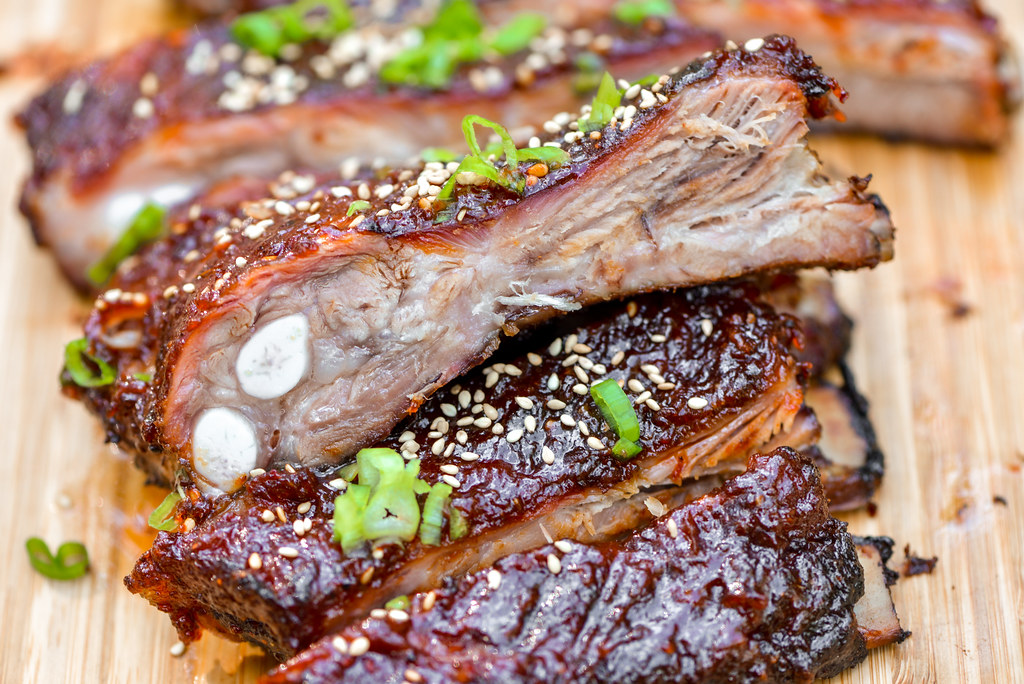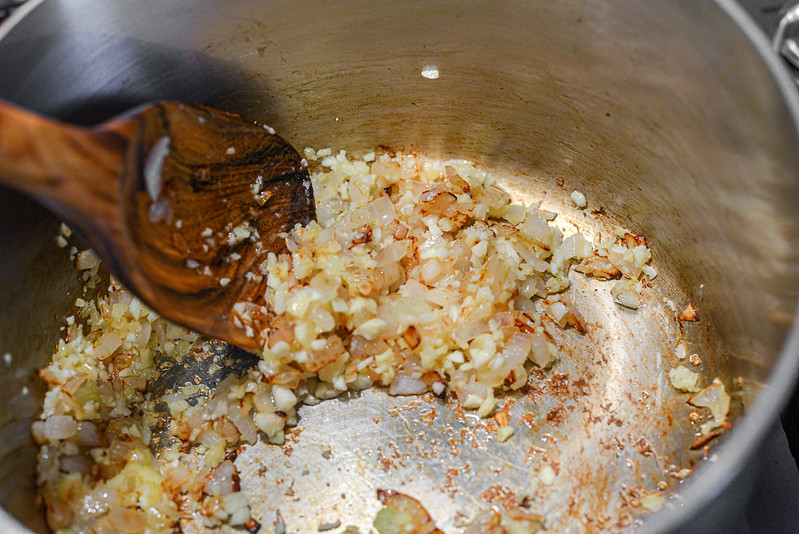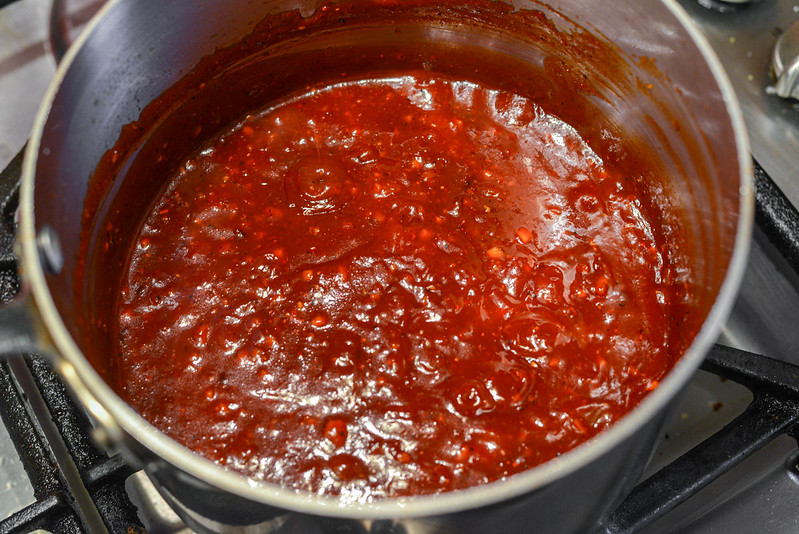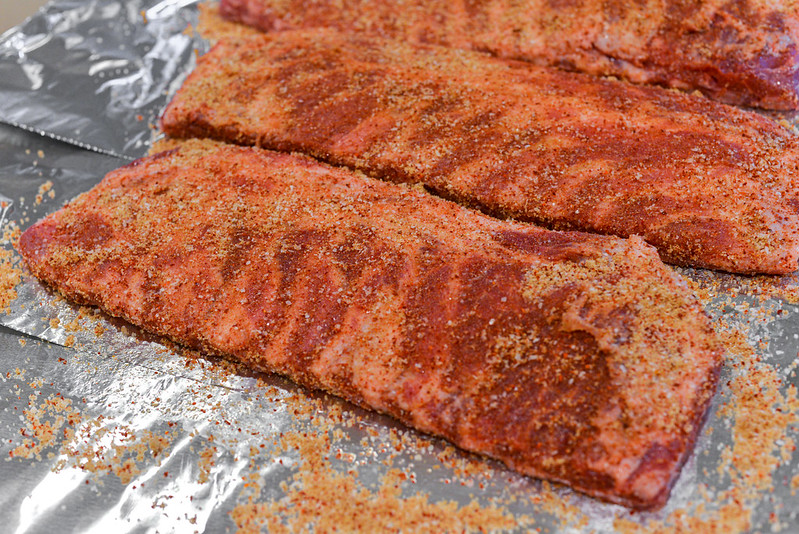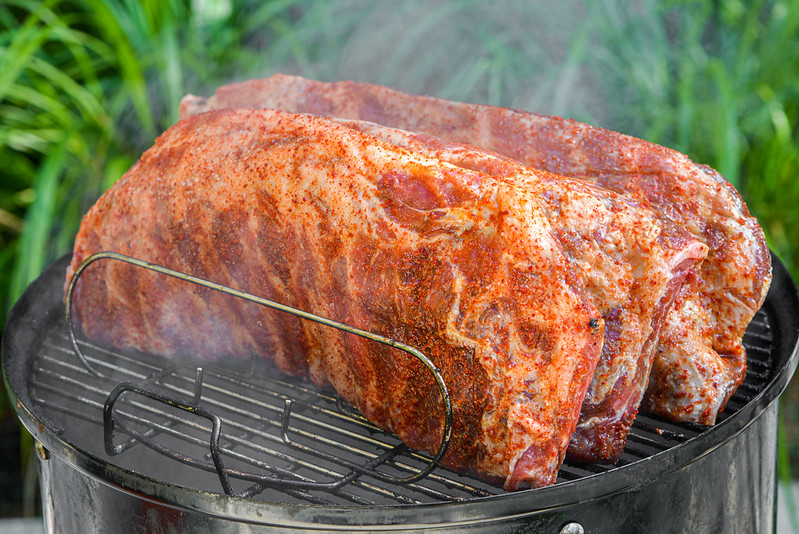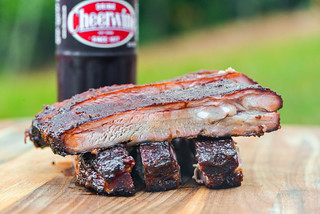Gochujang Ribs
Ah, gochujang, is there anything you can't make better? I so love this Korean spicy fermented pepper paste that I've developed an over reliance on it and use it again and again to make recipes that taste amazing. When that includes things like fire chicken, wings, daeji bulgogi, kimchi brussels sprouts, spicy cauliflower, and scallion pancake quesadillas, I'm left wondering if I've done too much...or maybe not enough. For now I'm sticking with the later and I have one more incredible gochujang-heavy dish to share with you all in these smoked ribs finished with a gochujang barbecue sauce.
The heart of this recipe is the sauce—it's what I spent the most time working on and delivers most of the flavor in the final ribs. Gochujang has such a strong presence in whatever it goes into that I felt like I needed to push the supporting sauce players more than usual to ensure they carry their weight in the finished profile. That began with a sautéing two tablespoons each of garlic and ginger after first softening and getting some light browning on a small diced onion.
Then I kept ketchup as the base to lay the barbecue foundations, but went in with almost an equal amount of gochujang, giving the seemingly normal looking sauce a surprising level of funky heat. I added to the spiciness with black pepper and gochugaru—Korean pepper flakes—and then balanced out the heat with light brown sugar and sweet rice syrup. Finally, I used soy sauce for the savory component, rice vinegar for extra tang, and sesame oil for a toasty and nutty undertone that's at home in many Korean sauces.
I was very happy with the sauce with its heavy handed spiciness and overall immensity that I foresaw working great on ribs. That led me to go pretty simple on the rub, using primarily light brown sugar, salt, and gochugaru. I did toss in a little garlic powder and ginger powder just to keep building on the flavors of the sauce a tad more.
I generously coated three racks in the rub—I had a crowd joining me to eat this day—and then wrapped them in foil and placed them in the fridge overnight. I like prepping the day before like this for convenience, but in the case of this particular recipe, I think I would have been better served seasoning the meat right before going on the smoker because the high sugar and salt content acted as brine and drew out a lot of moisture from the ribs, which ended up leaking out of the foil and leaving me with quite the mess to clean up.
I started these ribs in the morning for an afternoon cookout, placing them in the smoker I had running at 225°F with a couple large chunks of apple wood tossed on the coals. I had prepped a spray bottle with apple juice to spritz the ribs once they turned a mahogany red to preserve the color like I normally do, but I ended up not needing that part of my standard method this time around.
This is what they looked like after six hours of smoking—beautifully red hued without any need for adding moisture during the cook. At this point the ribs were done, which I confirmed by taking them out of the rack, laying flat, and then lifting one end with tongs. They all had a nice bend to them with no breaking, which meant the meat would stick to the bones nicely as I sauced and sliced, but then would come off easily when eating.
Another standard practice of mine is to sauce the ribs in the last half hour of cooking, but in reality, I much prefer to sauce the ribs over high hight since it sets the sauce faster and adds extra caramelization you don't get over low heat. I don't always have a grill going to do this, hence the saucing on the smoker, but this day I did, so I transferred each rack to my Weber kettle, sauced, and covered until the sauce had baked down. I then quickly moved the ribs over high heat, sauced side down, to get a little extra color and caramelization.
After slicing, I finished the racks with a sprinkling of sesame seeds and scallions before snapping some photos and digging in. By now, you probably don't need me to tell you that I loved them, but I will for good measure. It was no surprise to me that gochujang delivered again with these ribs, giving them a good heat and fermented pepper funk that made them immediately identifiable as Korean-influenced. What made them even better though were those American barbecue components that added in a smokiness, contrasting sweetness, and deeper complexity which all came together into a rack of ribs that I imagine could win the heart of any smoked meat lover. These ribs left me squarely in favor of continuing to lean into gochujang, because as much as I may be over relying on this sauce, it's hard to argue that's a bad thing with results as delicious as this.
